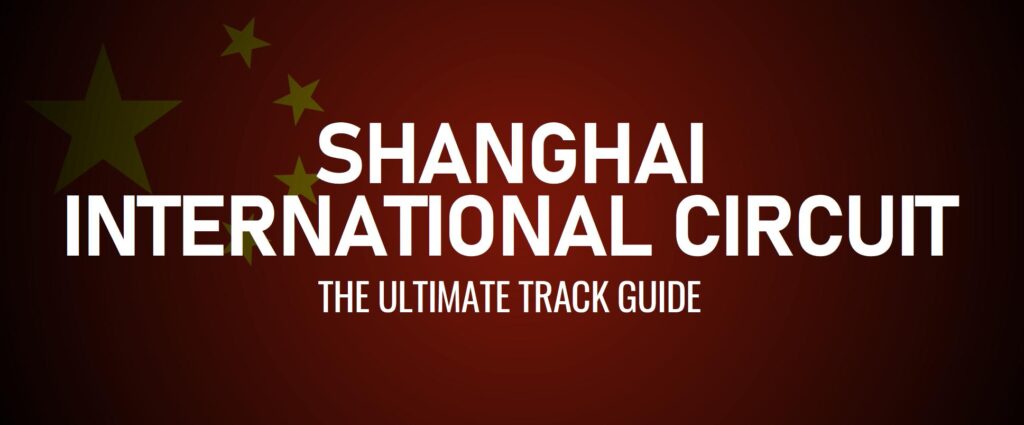
F1 broke into the Chinese market in 2004 with its first race at Shanghai International Circuit. The winding track, with incredible architecture, was an immediate hit with fans and drivers.
FIRST F1 RACE | 2004 |
TRACK LENGTH | 3.390 miles |
NUMBER OF LAPS | 56 |
NUMBER OF TURNS | 16 |
MOST POLES | Lewis Hamilton (6) |
MOST WINS | Lewis Hamilton (6) |
The first vision for a Chinese Grand Prix came in the 1990s, when planning had taken place for a circuit to be built to host F1 in the south of China. The result of this was the Zuhai International Circuit, which gained a place on the 1999 calendar. However, the event never happened as the track failed to meet the FIA’s standards.
Undeterred, another circuit was commissioned to be built near Shanghai. Three years after their failed attempt, a deal was announced for the yet to be built Shanghai International Circuit to host a Grand Prix for seven years from 2004.
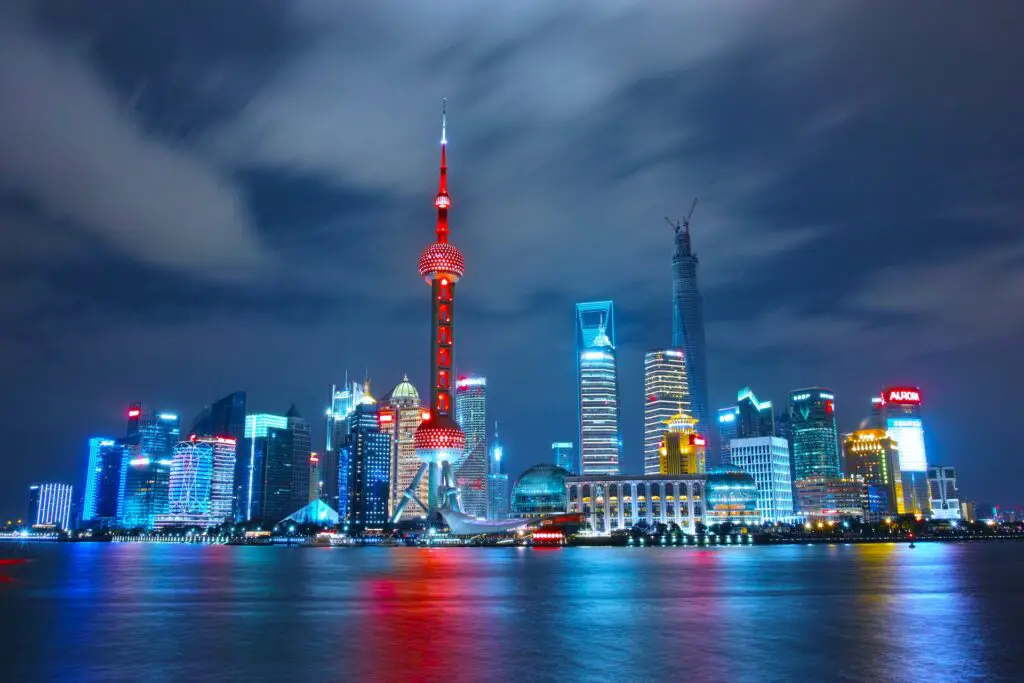
The Shanghai International Circuit is located twenty miles north of the centre of China’s largest city – Shanghai. It is situated on the banks of the Yangtze River Delta in East China. The track was designed by Hermann Tilke and resembles the Chinese character shang, meaning ‘ascend’. The team buildings resemble the ancient Yuyan-Garden in Shanghai.
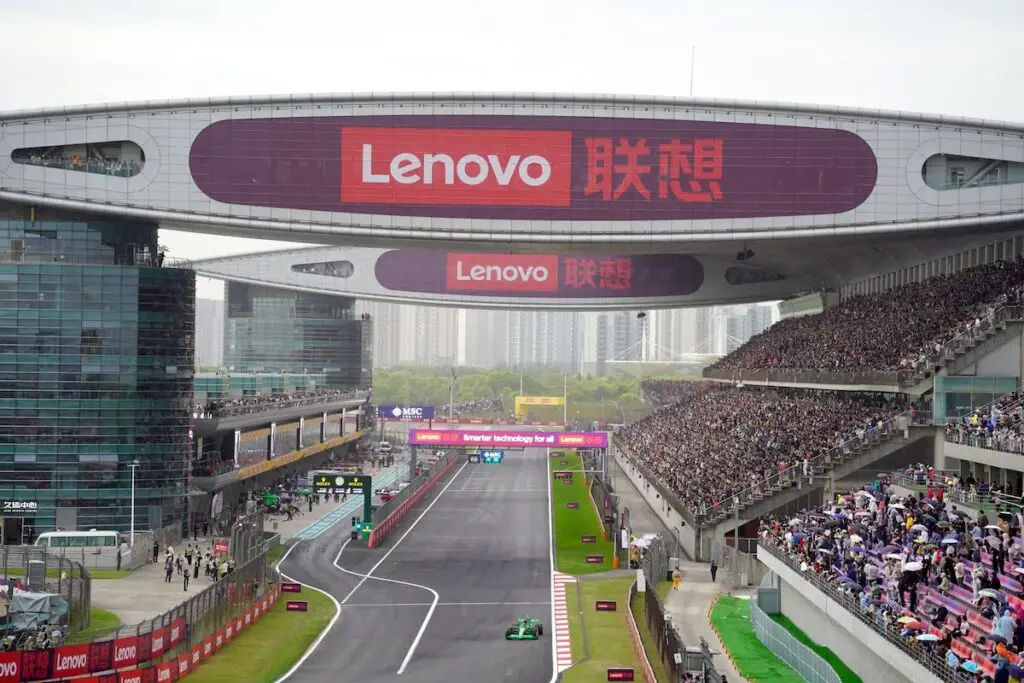
Shanghai International Circuit was a modern and futuristic track when it first arrived on the calendar, raising standards for any future tracks. Perhaps the most visually striking part of Shanghai International Circuit is the grandstand on the main straight, which gives a view of up to 80% of the track. It is constructed of aluminium glass and steel, and also houses the media centre along with a restaurant.
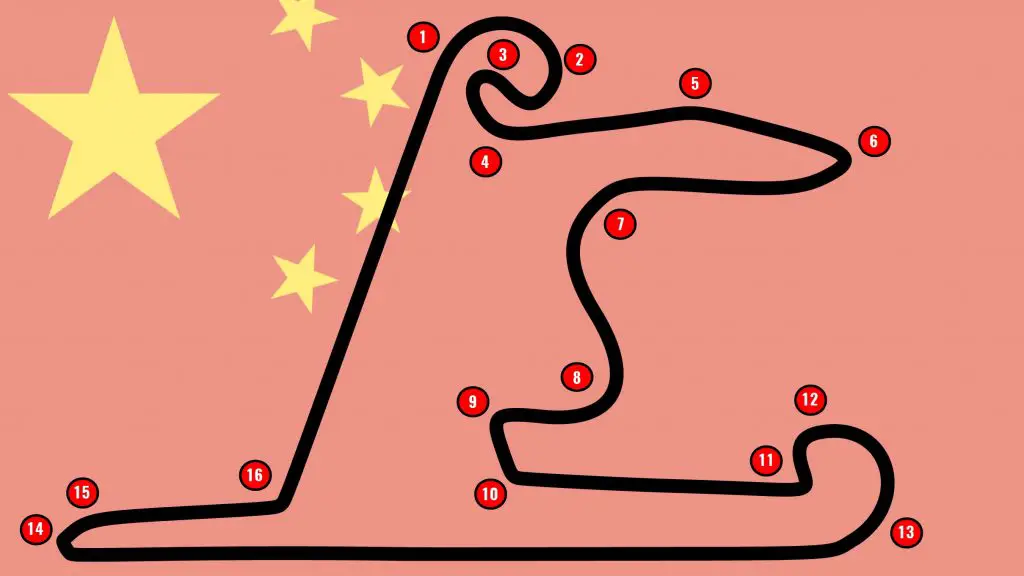
The track cost £132 million to build, which was a record cost at the time. Planning took place between April and May 2003 and the swampland was transformed into a state of the art racing circuit by 3,000 engineers over an 18 month period. The winding track is one of Tilke’s better designs, and is certain to challenge both the cars and the drivers.
The first Chinese Grand Prix took place in September 2004 and was won by Rubens Barrichello. In recent years, because of the ground the track is built on, some turns- namely 1, 8 and 14- have sunk. There was a full inspection of the issue before the Grand Prix in 2011 and work was carried out to solve the issue.
The Grand Prix’s popularity was in decline over the course of its first stint on the calendar. 260,000 spectators attended the first race here in 2004 – by 2010 that figure was just 155,000.
The 2020 Chinese Grand Prix was the first of many to be postponed due to the coronavirus pandemic. The event was postponed in February 2020 before being cancelled entirely six months later. The 2021, 2022 and 2023 Chinese Grands Prix were all subsequently cancelled, meaning the 2019 Chinese Grand Prix – the 1,000th World Championship event – remained the last F1 race held at Shanghai International Circuit for five years.
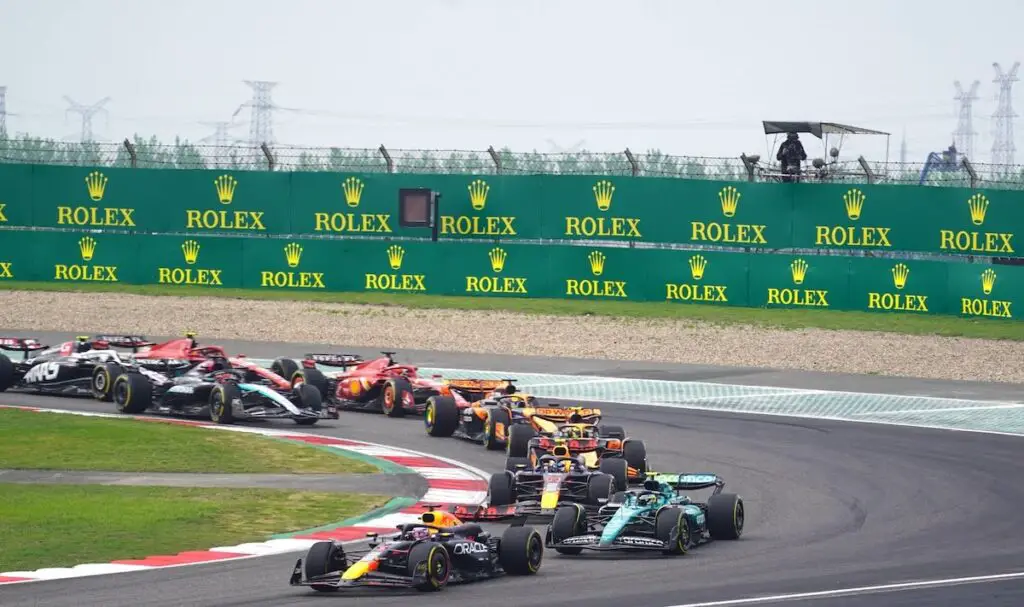
F1 finally returned to China in 2024, with Shanghai International Circuit hosting F1’s Sprint format for the first time. Attendance figures were boosted by Zhou Guanyu’s presence on the grid. Having being on the grid since 2022, Zhou finally had the opportunity to become the first Chinese driver to race in the Chinese Grand Prix.
In December 2024, Formula 1 announced that the Chinese Grand Prix will remain on the calendar at Shanghai International Circuit until at least 2030.
FAST FACTS
- As Shanghai International Circuit is built on marshland, the track is held in place by 40,000 stone pillars.
- Red Bull took their maiden victory at Shanghai International Circuit in 2009, while Nico Rosberg won his first Grand Prix here in 2012.
- Michael Schumacher took his 91st and final career win at Shanghai International Circuit in 2006.
- The Chinese Grand Prix has had five different title sponsors over its years hosting Grands Prix – Sinopec, UBS, Pirelli, Heineken (2017-19) and Lenovo (2024).
- The Chinese Grand Prix is a 56-lap race. However the 2014 edition was classified at 54 laps, after the clerk of the course mistakenly waved the chequered flag to Lewis Hamilton at the end of lap 55. According to article 44.2 of the Sporting Regulations, in these circumstances the race is deemed to have finished the previous time the leader crossed the start-finish line.
- Lewis Hamilton is the only driver to have won back to back races at Shanghai International Circuit, doing so in 2014 and 2015.
- Rubens Barrichello beat Jenson Button to the finish line by just 1.035s in the inaugural 2004 race at Shanghai International Circuit – which remains the closest winning margin of any Chinese Grand Prix.
2024 CHINESE GRAND PRIX RECAP
Verstappen took a clean sweep as F1 returned to China for the first time since 2019, taking victory in the Sprint and Grand Prix.
Following a five year absence, Formula 1 finally returned to China for the fifth round of the 2024 season. The first Sprint weekend of the season, track running was vital in Free Practice – though it wasn’t helped by a fire on the grass at Turn 7, which saw running stopped for five minutes.
Sprint Qualifying was held under the threat of rain, making the track busy. The earlier grass fire from Free Practice reignited at the end of SQ1, leading to a delay for the start of SQ2. The rain put an early end to the second session, with the final stage of Sprint Qualifying held in the wet.
Charles Leclerc spun off in the damp conditions in SQ3, while everyone else struggled to keep it on the tarmac. An action-packed close to SQ3 saw Fernando Alonso climb to the top of the timesheet, before Lewis Hamilton bettered the Aston Martin driver’s effort – but it was Lando Norris who secured pole by over a second. Norris’ lap time was deleted for him exceeding track limits before being reinstated.
Hamilton took the lead at the start of Saturday morning’s Sprint. Norris ran wide through the opening corners, allowing Alonso to move up to second place. By Lap 7, Max Verstappen had closed in on Alonso and secured the position at the hairpin. Two laps later, it was Hamilton’s turn to be passed by Verstappen.
From there, Verstappen was unchallenged for the win. Hamilton finished second but a train had formed behind Alonso by the closing stages. Carlos Sainz went wheel to wheel with his fellow countryman – but while the two Spaniards were battling, Sergio Perez slid by into third place. Alonso picked up a puncture, while the two Ferraris battled over fourth place, with Leclerc gaining the position ahead of the chequered flag.
Saturday afternoon saw qualifying for the main Grand Prix take place. Hamilton was the surprise exit in Q1, while home hero Zhou Guanyu – the first Chinese driver to race at the Chinese Grand Prix – also faced an early exit. Sainz crashed out in Q2, bringing out the red flags – despite being able to make it back to the pits and take part in the rest of qualifying.
There were no surprises as Verstappen secured pole position, while the identity of the driver starting alongside him changed with every passing lap – first Sainz, then Leclerc, then Piastri, then Norris, then Alonso, then Perez, who secured a front row lock-out for Red Bull.
On Sunday, Verstappen led away from pole but it was Alonso who got the jump on Perez as the cars streamed through the opening turns. Nico Hulkenberg passed both Ferraris on Lap 1 – but it was not long before both Sainz and Leclerc re-passed the Haas driver. It also didn’t take long for Perez to re-pass Alonso, with the Mexican making his move on Lap 5.
On Lap 7, Norris took third place with a pass on Alonso at the hairpin. Red Bull double-stacked their cars when they pitted at the end of Lap 13. Valtteri Bottas – who had reached Q3 on Saturday – became the race’s first retiree on Lap 21.
The Virtual Safety Car was called as a result and led to some drivers making an additional pit stop without losing time – including Verstappen, Perez and Norris. Perez lost on-track position to both Norris and Leclerc.
A messy restart saw the Safety Car required once again. First, contact between Lance Stroll and Daniel Ricciardo as the cars concertinaed into the hairpin ultimately put an end to Ricciardo’s race. Then, contact between Yuki Tsunoda and Kevin Magnussen led to a double DNF for the RB team.
The race was underway again on Lap 31. Perez’ fightback began, with Perez taking third place from Leclerc on Lap 39. Alonso had switched to the soft compound at his pit stop, which proved to be the wrong choice and he therefore required another stop. He went on to supply much of the entertainment for the rest of the race, with his fresher tyres aiding him to a seventh place finish.
Verstappen won the Chinese Grand Prix for the first time in his career, while Perez fell short of making it a Red Bull 1-2. Norris claimed second place, with the two Ferrari drivers completing the top five positions.
2019 CHINESE GRAND PRIX RECAP
Formula 1 celebrated its 1,000th Grand Prix as Mercedes completed a hat trick of 1-2 finishes with Lewis Hamilton taking a sixth Chinese Grand Prix win.
The first major incident of the 2019 Chinese Grand Prix weekend came in Free Practice 3, when a large crash put Alex Albon’s Toro Rosso out of action for qualifying. It was Valtteri Bottas who claimed pole position as fellow Finn Kimi Raikkonen missed out on Q3 for the first time in 53 races. As the 1,000th World Championship Grand Prix began, Lewis Hamilton passed Bottas in the opening corner, and there was contact further back, as Daniil Kvyat managed to hit both McLarens.
Charles Leclerc had overtaken team-mate Sebastian Vettel on the opening lap, but he was instructed to let him by on Lap 11. After the pit stops, Max Verstappen attempted an overtake on Vettel at the hairpin, but was forced wide and had to settle for fourth. Mercedes flawlessly double stacked their cars in the pit stops and Bottas soon after took second place from Leclerc.
While Kvyat and Norris joined Nico Hulkenberg as retirees, Hamilton took his sixth Chinese Grand Prix victory. Bottas finished second, giving Mercedes their third 1-2 finish of the season, while Vettel completed the podium.
2018 CHINESE GRAND PRIX RECAP
Despite early weekend troubles, Daniel Ricciardo took his first victory of the year while team-mate Max Verstappen made headlines for the wrong reasons.
Daniel Ricciardo’s participation in qualifying looked unlikely but, thanks to a quick engine change by the Red Bull mechanics, the Australian was able to line up sixth on the grid. Sebastian Vettel took his second pole position of the season, while both Mercedes started from the second row.
Valtteri Bottas made his way by Kimi Raikkonen at the first corner, and would go on to pass Vettel as a result of getting the undercut at the first round of pit stops. A miscommunication saw the Toro Rossos collide at the hairpin, with debris on the track leading to a Safety Car period. The timing of the Safety Car allowed both Red Bull drivers to head into the pits, while Mercedes and Ferrari stayed out.
Verstappen lost a position to Ricciardo as a result of being too optimistic with a move on Lewis Hamilton, then tangled with Vettel at the hairpin, damaging both of their prospects for the afternoon. Meanwhile, Ricciardo cleanly scythed through the field, with a masterful move on race leader Bottas powering him to victory. Vettel finished down in eighth, while Verstappen picked up a ten second penalty for his antics.
SHANGHAI INTERNATIONAL CIRCUIT WINNERS AND POLESITTERS
Year | Polesitter | Team On Pole | Winner | Winning Team |
|---|---|---|---|---|
2004 | Rubens Barrichello | Ferrari | Rubens Barrichello | Ferrari |
2005 | Fernando Alonso | Renault | Fernando Alonso | Renault |
2006 | Fernando Alonso | Renault | Michael Schumacher | Ferrari |
2007 | Lewis Hamilton | McLaren | Kimi Räikkönen | Ferrari |
2008 | Lewis Hamilton | McLaren | Lewis Hamilton | McLaren |
2009 | Sebastian Vettel | Red Bull | Sebastian Vettel | Red Bull |
2010 | Sebastian Vettel | Red Bull | Jenson Button | McLaren |
2011 | Sebastian Vettel | Red Bull | Lewis Hamilton | McLaren |
2012 | Nico Rosberg | Mercedes | Nico Rosberg | Mercedes |
2013 | Lewis Hamilton | Mercedes | Fernando Alonso | Ferrari |
2014 | Lewis Hamilton | Mercedes | Lewis Hamilton | Mercedes |
2015 | Lewis Hamilton | Mercedes | Lewis Hamilton | Mercedes |
2016 | Nico Rosberg | Mercedes | Nico Rosberg | Mercedes |
2017 | Lewis Hamilton | Mercedes | Lewis Hamilton | Mercedes |
2018 | Sebastian Vettel | Ferrari | Daniel Ricciardo | Red Bull |
2019 | Valtteri Bottas | Mercedes | Lewis Hamilton | Mercedes |
2024 | Max Verstappen | Red Bull | Max Verstappen | Red Bull |
